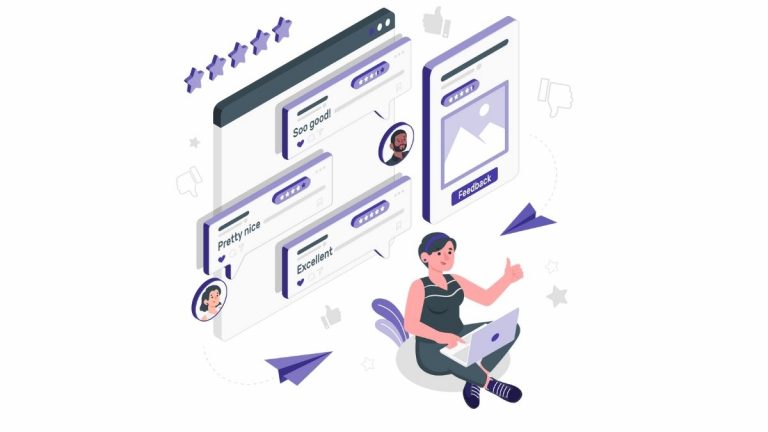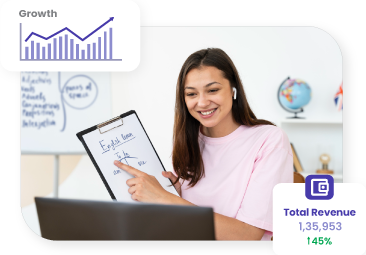A marketing funnel is a technical tool that attracts interested prospects and turns them into customers. It serves as both a visual depiction of the sales process and a technical engagement strategy. As with its namesake, it begins by drawing a wide net to gather as many intriguing leads as possible, then nurtures them over time to encourage those who are most inclined to take action to do so.
Of course, in a perfect world, every prospect would convert into a customer, but because neither of those things is realistic or possible, it is your responsibility as the course designer to ensure that as many prospects as you can convert through your marketing funnel.
Distinct marketing funnels have different stages and are divided in different ways. That implies that there is no one “correct” approach to build a funnel. However, they commonly go in the following sequence:

Awareness
Users first become aware of your brand at this “lead generation” step of the funnel. Every marketing funnel begins with a device that raises awareness of a particular issue. You should use your product or service to address this issue. Several strategies exist for raising awareness. A few typical methods are:
- Instagram and Facebook ads
- Ads on Google
- Search Engine marketing
- Lead magnets or additional freebies
- E – books with a hyperlink to your landing page
- online tests
- posts on social media
- emails sent to partner lists or your list
- Mini-courses
- email chains
What method you use to raise awareness, you need to concentrate on a problem that your potential customers desire to have solved. Unless someone is actively trying to solve an issue or accomplish something important to them, they won’t take the time to read an offer.
Interest
This is when the “nurturing” phase of the funnel begins when there is some level of interest on their behalf in what you are trying to say and sell. You need to create interest in your solution once you have your prospects’ attention. You introduced a problem in the previous Awareness stage. At this point, you want to highlight the issue and demonstrate how your good or service will assist in resolving it.
For that:
- Establish a relationship with your potential customer.
- Inform potential clients of the severity of the problem
- Justify the need for them to act immediately to address the issue.
- Inform them that there is a practical, workable solution.
By relating your personal experience with the issue, you can rapidly pique interest. This gives them a sense of community. They start to believe in your ability to assist them to get through it after seeing you on the other side.
Consideration
At about this stage, customers start to seriously examine your offer as a means of achieving the desired outcomes. Your objective at this point is to influence the prospect to buy. You have to get over whatever barriers your prospect may provide in order to accomplish that.
Various solutions will be introduced in your sales copy. These are frequently the several options that your prospect has accessible to them:
- Taking absolutely no action
- Features X, Y, and Z (which happen to be available in competitor products)
- Options A, B, and C for resolving the issue
You must go over each choice one at a time and explain why it isn’t the best course of action. Then, describe the operation of your product. Describe why it is superior, quicker, or less expensive.
Intent
At this point, the customer is fascinated and firmly intends to purchase, but they might want to read reviews or give it a shot first. You want to pour on the proof at this point in the marketing funnel. Include endorsements and testimonials from pleased clients. Case studies and success tales should be included. There should be no doubt about your ability to provide the promised answer.
Evaluation
At this point of the nurturing process, your goal is to reassure them that they are making the right decision rather than persuade them to buy. At the bottom of the marketing funnel, you merely request action from your client. For that:
- Make your offer.
- Avoid risk as much as possible.
- Make a strong, unequivocal call to action.
You can either integrate a form on your page or provide a button that opens an order form. At this point, your objective is to minimise friction and make it as simple as possible for them to accept your offer.
The buyer completes these steps before making a purchase. They are currently a course customer. The marketing funnel, however, isn’t always a straight line. As a prospect learns more about their possibilities and narrows their choices, they may alternate between awareness and interest or interest and consideration.
How To Build A Marketing Funnel?
You can divide the buyer’s journey into several stages using a marketing funnel. This enables you to structure your marketing plans according to each stage. When using a funnel, you can adapt your message to the user regardless of the stage of the funnel they’re in rather than just throwing a lot of marketing and advertising at the wall and hoping some of it sticks.
A marketing funnel is also a terrific approach to arranging your promotional activities in a clear and uncomplicated manner. They simply do their jobs. It’s crucial to put yourself in the prospect’s shoes when you create your lead magnet and follow their steps. You are aware that they are interested in what you have to say.
Creating a lead magnet:

A lead magnet, or something alluring that motivates the user to take the first step, is the best way to obtain the lead, which is the first step in the customer journey.
For course designers, this may be a free introductory lesson, a trial, or even just a straightforward manual containing the materials or tools needed to get going. In essence, a lead magnet is a freebie that is intriguing and appealing enough to pique someone’s interest in learning more.
Making a webpage:

Webpage
Making a landing page to promote your lead magnet is the next stage. Fortunately, if you’re using Exly, our landing page builder is customizable and simple to use. In just a few clicks, select your preferred theme, make any necessary changes, and publish it.
You can see that the goal of these landing sites is to pique interest in and enthusiasm about downloading the lead magnet. Through the freebie you’ve generated, this is essentially the prospect’s first introduction to you and you to them.
Include a lead generation form:

Lead Generation Form
With your marketing funnel, you’re not just dispensing a video or a guide—nothing is truly free. In return for the user’s name and email address, you are doing this action. This will give you the chance to email them about your course and explain why they ought to enrol.
A lead capture form is what prompts them to take their first bite after you urged them to try a free sample. Email marketing forms can be used with Exly without any issues. The landing page merely needs to have the form included. On the back end, everything is taken care of to attract qualified leads to your funnel.
- Build an email marketing campaign:

E-mail Marketing
Nurturing that lead is the next phase in the marketing funnel. Give them every incentive to think about utilising your membership or course for their educational needs. Encourage these potential students by letting them know what to expect, what they’ll learn, and, most importantly, what previous students are saying about your course.
Make sure to include testimonials from other people. Nothing inspires you more than hearing what other students think of your course. They could be an effective tool for promoting your course! Remember that not all emails should be blatant advertisements. Instead, remind them of why they agreed to participate.
- Promoting your lead attraction:

Lead Attraction
Promote your lead magnet. There are two primary approaches to advertise the fact that you are providing this lead magnet as a freebie:
- Paid marketing- The best method to start generating immediate interest in what you have to offer and sell is through paid marketing.
- Blog and social media posts – Mentioning your giveaway in your blog and social media posts take longer, but it may once more catch your readers’ attention.
Getting started!
Top course developers systematically employ marketing funnels to draw in and convert students quickly. And after creating a pipeline funnel, you may use it to expand your firm for months or even years afterward.
Exly makes Everything you need to professionally and easily develop, launch, and advertise your course is available on our user-friendly platform. It provides tested plans for all of your marketing requirements. Therefore, you don’t need to be an expert in funnel design to create persuading, high-converting sales funnels. It automates your campaigns and has sophisticated functionality built-in, making it simple to engage your audience and market your expertise.
Get started on a wonderful journey which will change your life with Exly!





